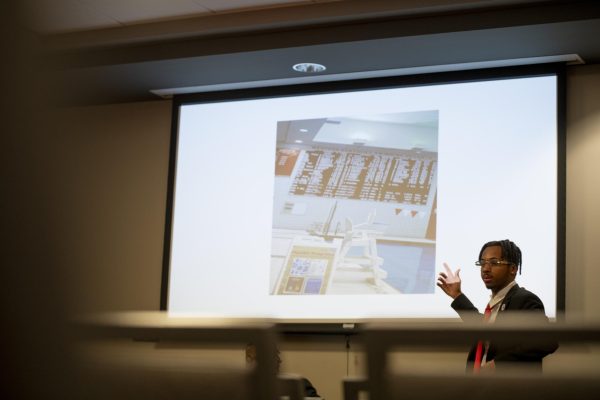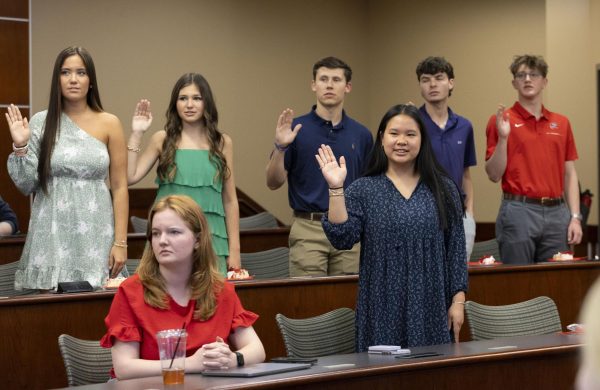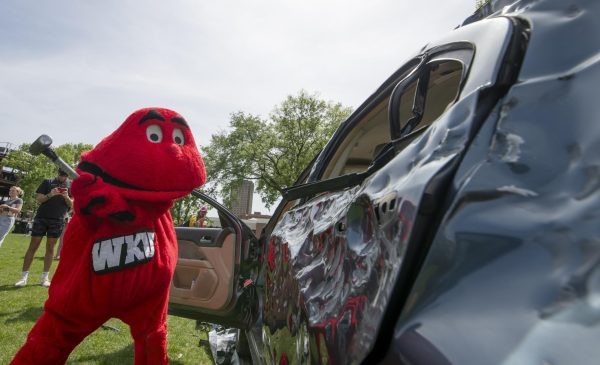Professors share ‘flipped classroom’ experiences
April 3, 2017
Several professors at WKU are adopting elements of a “flipped classroom” in their courses. A flipped classroom is the “exact opposite” of a traditional classroom model, meaning students listen to recorded lectures at home and participation application learning in the classroom.
Jerry Daday, the executive director of the Center for Innovative Teaching & Learning & the Online Learning Research Office, explained the logistics of flipped classrooms and why he thinks they are effective.
“If you think of a stereotypical traditional class in higher education, you have a professor standing in front of the room lecturing and disseminating content to students,” Daday said. “Students are taking notes, and there’s the underlying assumption that students are retaining the information by listening. Students will then do some homework outside of class for application.”
Professors can currently use the program, MediaSite, for their flipped lectures. MediaSite allows them to record desktop lectures, audio and webcam videos, which they can upload directly onto a server and upload the video lectures to Blackboard.
Daday recalled his first experiences teaching sociology and said his class setup was vastly different from his current approach.
“When I first started teaching in 2000, I lectured all the time,” he said. “ … I didn’t have a lot of confidence in my knowledge of sociology. So, I built all these power point presentations, and I would walk through them.”
Daday began implementing more in-class exercises, including more discussions and more “think/pair/shares,” as he calls them. After a few years of initiating these activities, he began using Tegrity, a program that WKU utilized for recording lectures.
“Just because you disseminate content doesn’t mean the students learn anything,” he added. “So over time, I learned that just lecturing at students isn’t really appropriate. I needed to find ways to play with the terminology and play with the information.”
Daday now lectures for about 25 percent of his class time. He says his courses have a much more active learning environment.
“Building a flipped class takes a ton of effort, because you really have to think about, ‘How am I going to take my lectures and put them online, but what am I going to do in class that is going to have students applying the information?’” he said.
Daday also said there are not many classes that are strictly “flipped” at WKU, but there are not many that are strictly traditional either. He said professors typically begin by flipping one or two lessons and keep build from there.
Kerrie McDaniel, an assistant biology professor, uses partial flipping strategies in her anatomy labs. She recently flipped her course section that covered the skeletal and muscular system.
“Students are briefly introduced to the bones and bone markings but do the majority of their learning outside of class time on their own using the resources that we have provided,” McDaniel said. “These resources include digital materials and assignments as well as actual bones that they can use in the reserve section of the library.”
McDaniel then assesess the students on the information they covered, who then build on that information in the next lab period by using the bones and bone markings as references for learning the muscles.
“It forces students to come to lab prepared for learning muscles,” she said. “It gives us time to do hands-on learning.”
McDaniel also gathered statistics while flipping her lessons and found that both students’ grades and students’ positive perceptions of the course improved.
Daday recently gave a presentation about flipped classrooms and McDaniel’s study at the Mar. 24 Board of Regents Meeting.
He said Board of Regents member, Phillip Bale recently wrote a book involving flipped classrooms. Bale approached Provost David Lee about having a presentation on flipped classrooms at the meeting, and Lee asked Daday to give the presentation.
“I was thrilled about it,” Daday said. “We have faculty on campus that are doing some amazing things in their classrooms. A university is about academics, and it’s about the teaching and learning environment. So, my hope is that we can establish something that’s more integrated.”
“I don’t think employers want to hire our graduates if all they can do is listen and regurgitate information,” Daday said. “Employers want graduates who, yes, know some things, but they also know how to apply it and synthesize it. If we don’t give our students the opportunity to do that in our classes, then they’re not going to be able to do it when they graduate.”
Reporter Bryson Keltner can be reached at 270-745-6011 and [email protected].

























